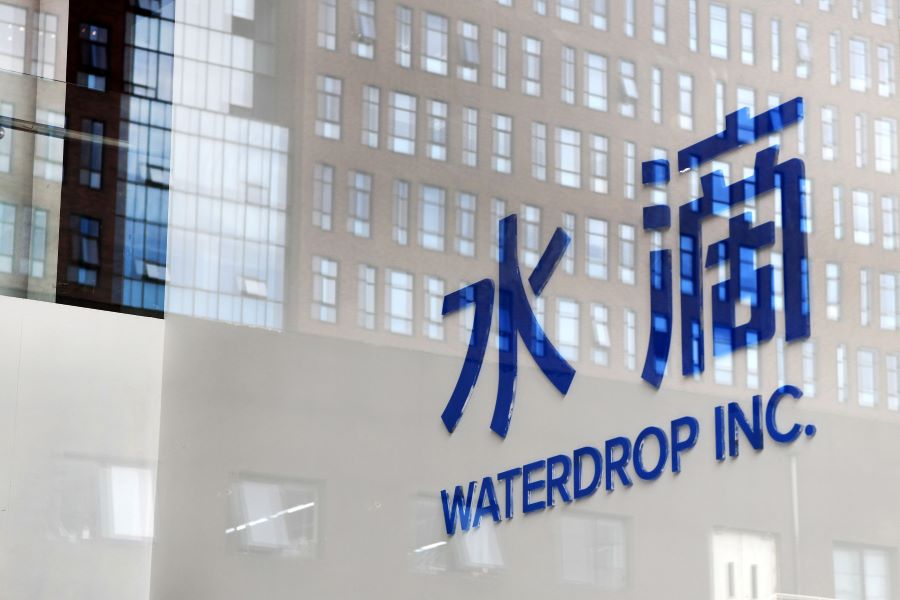Waterdrop Stock Splashes to New Depths in Summer of Regulatory Cleanups

Company’s shares are down 22% since release of its latest results showed a swing back to an operating loss as marketing costs soared
Key Takeaways:
• Waterdrop posted healthy gains in revenue and paying customers in the second quarter, but swung back to an operating loss as sales and marketing costs soared
• Company’s shares are down more than 75% since their April IPO due to a combination of widening losses and regulatory concerns
By Thomas Zhang
Nobody wants to see their investment evaporate more than 75% in just four short months. But unlucky investors in online insurance broker Waterdrop Inc. (NYSE: WDH) are now finding themselves in just such a situation, as the company’s recently listed stock plumbed new all-time lows in the days after it announced its latest quarterly results.
The results were a mixed bag that’s typical for such young companies, including strong user and revenue growth and a big operating loss. Waterdrop reported 53% growth in fee-paying customers during the quarter and a 38% increase in net operating revenue year-on-year. But it also registered a quarterly operating loss of 815.4 million yuan ($126.3 million), reversing an operating profit of 7.2 million yuan a year earlier.
Investors were clearly unimpressed. The stock has sagged 22% since the results were announced last week, and on Tuesday breached the $3 mark to close at an all-time low of $2.91. That’s less than a quarter of the listing price of $12 when the company first floated shares in May.
Waterdrop blamed the loss partly on sharply rising operating costs and expenses, which shot up 160.5%. Sales and the marketing expenses also more than tripled during the quarter, as the company spent heavily on third-party channels to acquire new users and promote its brand.
One might wonder why Waterdrop, often hailed as one of China’s leading insuretech companies, would pay huge sums to third-parties to gain potential new customers rather than simply grow organically through its own channels and marketing efforts.
To answer this question, we need to step back and look at Waterdrop’s development. The company started in 2016 as a middleman broker for health and life insurance policies, as well as a mutual aid platform for people looking to crowdfund expensive medical treatments. The latter business garnered more than 100 million users in about five years.
Waterdrop thrived partly by channeling its huge crowdfunding user base, which had positioned the company as a sort of charitable organization, into its more lucrative insurance brokering business. Founder and CEO Shen Peng once told media that premiums derived from users of the mutual aid platform accounted for a sizable 20% of the company’s total.
While leveraging the crowdfunding base to build up its insurance-selling business sounds like a good tactic from a business perspective, the regulators didn’t quite see it that way. Last year China’s insurance regulator issued a policy paper saying such mutual aid platforms were essentially commercial insurance providers doing business unsupervised. That meant such companies lacked the proper operating licenses to offer such insurance, it concluded.
Sensing imminent regulatory scrutiny, Waterdrop shut down its mutual aid platform at the end of March, a move widely seen as pre-emptive to avoid any uncertainty ahead of its IPO plans that were already underway. Media reports even hinted that the insurance regulator wanted the listing postponed, but Waterdrop went ahead anyway.
Thus Waterdrop was forced to jettison one of its biggest referral sources for new insurance business, which may partly explain its current heavy reliance on costly third-party channels as a source for finding new customers.
Changing Market
Waterdrop marched ahead with its IPO by trying to wow investors with the big potential of China’s insurance market. Third-party research in the company’s IPO prospectus showed China’s insurance penetration was just 4.3% in 2019, compared to around 10% for developed countries like the U.S. and Japan. It gave the added impression that penetration was especially low in China’s smaller cities.
Indeed, Shen revealed on the company’s latest earnings call that much of Waterdrop’s premium and operating revenue growth were driven by strong demand from such smaller cities.
While Waterdrop’s shares have taken a beating since their trading debut, we should also point out that many of its peers have suffered similar losses in the past few months, regardless of their profitability. Shares of online insurance company Huize Holding Ltd. (HUIZ.US), which lost more than 77 million yuan in the second quarter of 2021, have tumbled more than 60% since July. That stock is also down nearly 80% from its February 2020 IPO price.
Even online insurer ZhongAn (6060.HK), which just made a profit from underwriting insurance for the first time in eight years, has seen its shares lose nearly a third of their value from a July peak. Only Fanhua (FANH.US), an insurance product underwriter with offline operations, has fared better by remaining relatively stable around the $15 mark since mid-July.
Waterdrop’s two biggest rivals may actually be two unlisted giants: Antsure, the insurance platform owned by fintech giant Ant Group; and Tencent’s Wesure insurance affiliate. Both enjoy huge traffic referral volumes from their large parents that dominate China’s internet.
After adding a few other traditional offline insurance companies that have moved into the online space, it’s clear that competition is quite intense. Still, Waterdrop is relatively well positioned, having established itself as a leading player in the realm before the latest regulatory clampdown began. One study showed the company was already China’s largest third-party insurance platform based on first-year premiums (FYP) for life and health insurance.
So what’s next for Waterdrop?
Considering it’s losing money, investors are likely to focus on when it might turn profitable again. To a large extent, that will depend on how quickly Waterdrop can bring down its sales and marketing costs without losing too many customers in that process. CFO Shi Kangping touched on that in the company’s earnings call, saying he expected “to reduce our sales and marketing expenses maturely comparative to this quarter” without giving any numbers.
Waterdrop is also focused on lifting its margins. Co-founder Yang Guang revealed on the call that in the second quarter, first-year premiums (FYP) per customer reached 1,276 yuan, compared to 1,165 yuan the previous quarter. In addition, the overall repeat purchase rate for short-term insurance is now over 50%, indicating customer “stickiness” is rising.
Lastly, investors may be crossing their fingers that no major new regulation descends on the insuretech sector in the near-term. In what’s become relatively common for Chinese companies listing overseas, Waterdrop outlined a wide range of risks in its IPO prospectus relating to potential for changing regulation.
Few investors may have read that section of the prospectus too closely before the April IPO. But after a turbulent summer, many may want to go back and take a second look.
To subscribe to Bamboo Works free weekly newsletter, click here





